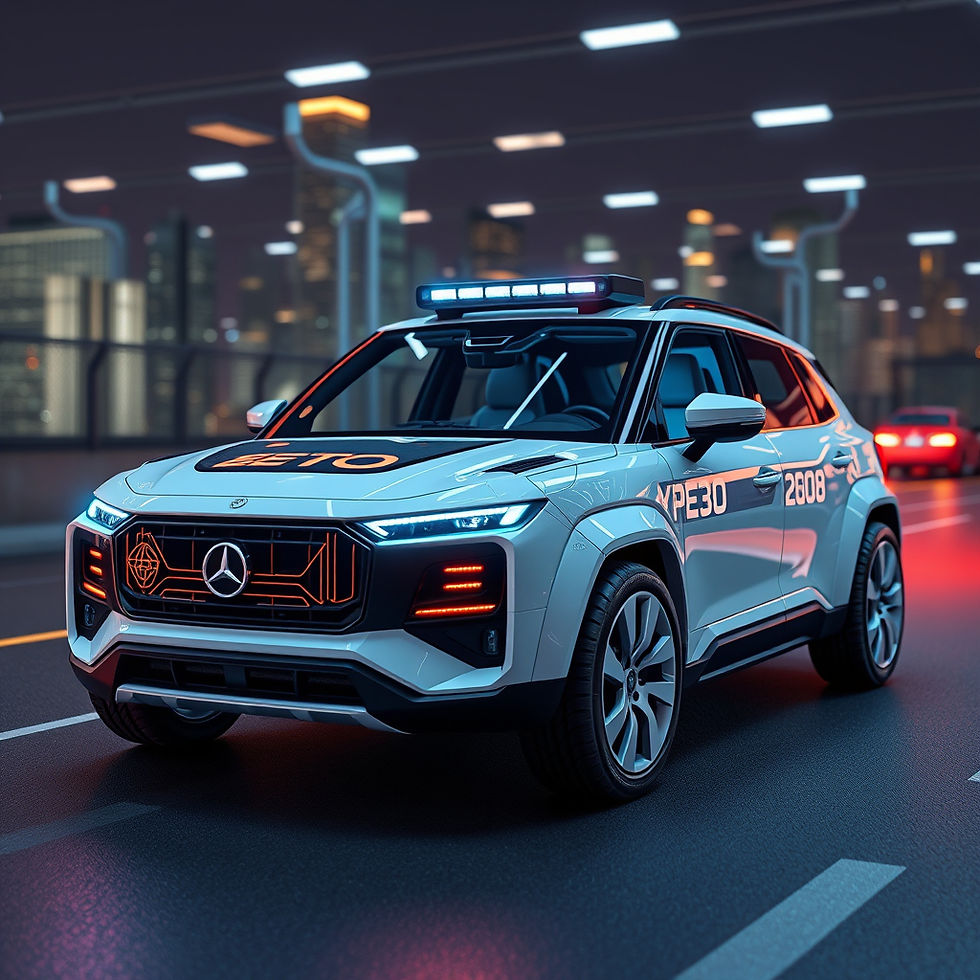Why Automotive Companies Are Turning to 3D Simulations to Train AI and Autonomous Vehicles
- Geniuscrate

- Jul 2
- 3 min read

As the race toward fully autonomous vehicles accelerates, automotive companies are investing heavily in 3D simulations to train and refine their AI systems. Real-world testing alone is no longer fast, safe, or scalable enough. Instead, high-fidelity virtual environments powered by cutting-edge 3D modeling and real-time engines are driving the next generation of innovation in autonomous mobility.
At GeniusCrate, we develop the visual backbones of these simulations with hyper-detailed 3D assets and environments that mimic real-world complexity and variability for effective AI training and automotive AI.
The Problem: Real-World Testing Has Limits
While real-world data is crucial, relying on it exclusively presents serious drawbacks:
Limited edge-case scenarios (e.g., extreme weather, rare accidents)
High financial and safety risk
Slow iteration cycles
Geographical and regulatory constraints
To move fast and train smarter, companies need virtual test grounds where they can simulate billions of driving miles, and do so across endless combinations of roads, environments, and hazards.
The Solution: 3D Simulations for AI Model Training
Using real-time engines like Unreal Engine paired with realistic 3D assets, automakers and tech companies can build vast digital landscapes. These environments are used to:
Simulate pedestrian behavior, lighting changes, traffic patterns, and emergency situations
Train perception models in object detection, lane tracking, and obstacle avoidance
Continuously improve decision-making algorithms under variable conditions
The best part? Every test is safe, repeatable, and fully customizable which accelerates AI development exponentially.
Core Benefits of Using 3D Simulations in Automotive AI
1. Risk-Free Learning
Simulations allow autonomous systems to fail safely, analyze those failures, and iterate—without any risk to property or life.
2. Cost and Time Efficiency
Training in virtual environments reduces the cost and time required for physical testing while scaling data generation.
3. Edge-Case Mastery
Rare, high-risk situations; such as a pedestrian darting into traffic during a storm that can be recreated and tested repeatedly.
4. Real-Time Scalability
Thousands of virtual agents and vehicles can be run in parallel, drastically reducing the time it takes to train complex models.
What Powers These Simulations?
Creating effective training environments requires:
Ultra-realistic cityscapes, road systems, and traffic elements
Dynamic weather, time-of-day, and lighting systems
Detailed assets such as cars, street signs, pedestrians, and obstacles
Physics-based materials to simulate real-world interactions (e.g., glare, rain, tire friction)
GeniusCrate specializes in developing these components by ensuring they're both visually accurate and performance-optimized for continuous, large-scale AI training.
Why Outsourcing Makes Sense for Automotive Simulation
Instead of building everything in-house, automotive companies often turn to external studios to:
Save development time
Access specialized 3D artists and technical expertise
Ensure realism across diverse environments
Stay agile while testing multiple simulation scenarios
With a dedicated team like GeniusCrate, automakers can focus on AI and software—while we bring the digital world to life.
The Future of Autonomous Driving Is Virtual
From smart lane navigation to emergency braking systems, everything in modern autonomous driving depends on how well the AI is trained, and that training is happening in 3D simulated environments.
As vehicles become smarter, so must the training platforms behind them. Virtual testing will continue to be the foundation of AI safety, performance, and evolution in the automotive sector.
Ready to Accelerate Your Simulation Capabilities?
If you're working on autonomous driving, vehicle perception, or simulation-based testing, GeniusCrate can help. We provide hyper-realistic 3D environments and assets tailored for AI training platforms; scalable, high-performance, and visually rich.
Get in touch today to build the future of driving.


Comments